Feeding and watering animals is a fundamental aspect of animal care, essential for their health, growth, and overall well-being. Proper nutrition and hydration are critical not only for domestic pets but also for livestock, wildlife, and various species in captivity. Understanding the dietary needs of different animals is crucial, as these needs can vary significantly based on factors such as species, age, health status, and activity levels.
Watch
This next video explains how to feed and water train calves.
Upholding animal welfare principles when feeding
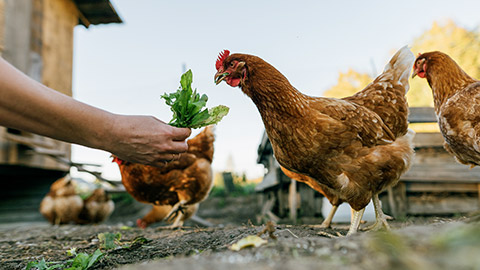
Before delivering the food and water to animals, let’s recap the overarching eight principles of animal welfare, which should guide you at all times in your actions towards an animal when feeding and caring for them.
Consider how the principles of animal welfare in the following table relate to delivering food safely and appropriately.
| Principle | The animal should have access to: | As an animal carer, you should: |
|---|---|---|
| Animals should not suffer from prolonged hunger |
|
|
| Animals should not suffer from prolonged thirst |
|
|
| Animals should have a comfortable environment |
|
|
| Animals should have enough space to be able to move around freely |
|
|
| Animals should be free of physical injuries |
|
|
| Animals should be free of disease |
|
|
| Animals should not suffer pain, fear or stress |
|
|
| Animals should be able to express normal, non-harmful social behaviours |
|
|
Keeping these principles in mind, when feeding an animal, you must consider how they might react and ensure they feel as little distress as possible during this process.
Scenario: Handling Watermelon, the guinea pig
Let’s relate the animal welfare principles to how you would handle the guinea pig, Watermelon, should she need hand feeding. First, ask your supervisor to demonstrate appropriate handling techniques for guinea pigs or read Handling your guinea pig to ensure you don’t cause her injury or stress. She will squeal in protest if you do or even bite you if she is frightened or feels threatened.
Approach her with two hands, using one to stop her from running forward and the other backwards. As you pick her up, use one hand to support her tummy and the other to support her hindquarters, hugging her into your body or wrapping her in a cloth for security. You could then feed her knowing that you are safe, and she feels safe because she is being handled appropriately and respectfully (Bishops Stortford Vets, n.d.).
The following video (1:25 min) demonstrates a safe way to pick up and support a guinea pig.
Before you handle any animal in your care, ensure you always seek training and knowledge on the unique characteristics of the particular animal and seek advice from your supervisor if in doubt.
Last checks before providing food and water
At this stage, you should be ready to feed and water the animals in your workplace according to their feeding plans. It is important to re-read the plan at this point to double-check that you:
- are feeding the correct animal the correct food
- identify potential hazards and behaviours of concern
- are wearing any PPE that you may need.
You must also read the workplace policies and procedures for monitoring animal feeding. The policies and procedures are in place to help you quickly identify health and behaviour problems or changes. Source this information in your animal care workplace, read it and implement it.
Review example procedures in the Daily Animal Health Monitoring Program (pdf) from the University of Wisconsin–Madison School of Veterinary Medicine. Pay careful attention to the monitoring process from the beginning to the end because this will prepare you for your own workplace (University of Wisconsin Madison, 2015).
After carefully considering your feeding plan and workplace policies and procedures, you will now know if you need to put on PPE, how to approach the animal you are feeding safely, and what you need to observe, monitor, and record when feeding the animal or animals in your care.
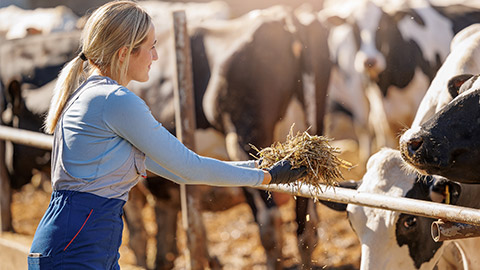
Handling and Splitting Food based on animal requirements
When you are organising food, there might be times you need to look at food vs packaging. For example, a dog food can is 800mls. The dog requires 400 ml for breakfast and 400 ml for dinner. This means you will need to split the can of dog food to adhere to the food requirements of the animal.
By creating a clear guide with step-by-step instructions and practical examples, students can gain confidence in how to interpret and manage wet food portions.
Understanding Portion Sizes:
- Check Feeding Guidelines: Wet food packages usually include feeding instructions based on the animal's weight, age, and activity level. Use these guidelines as a baseline for dividing food.
- Daily vs. Per Meal Portions: Identify whether the amount given is for the entire day or per meal. If it’s a daily recommendation, divide it into the appropriate number of meals (e.g., twice daily for cats or dogs).
Using Measuring Tools:
-
Use scales or measuring cups to accurately portion wet food. This avoids overfeeding and ensures that the correct nutritional intake is maintained.
Handling Multi-Animal Feeding:
- When feeding multiple animals, calculate the individual needs of each animal and then divide the total amount of wet food accordingly. Ensure you account for any dietary differences between the animals (e.g., one animal may need a larger portion due to size or age).
Practical Tips:
- Pre-Portion Food: For easier feeding, divide the wet food into portions when you first open the pack, and store the remaining portions in the refrigerator, clearly labelled for the next meal.
- Use-by Dates: Wet food spoils faster than dry food, so it’s important to store opened portions properly and ensure they are used within the recommended time to prevent waste.
For example, view the info graph below, which looks at the different portion requirements for animals in different stages/ ages.
| Cat | Bottle-Feeding (3-5 weeks): For kittens aged between 3 and 5 weeks, bottle feeding is essential, especially if they are weaned early or have no access to their mother's milk. Use kitten milk replacer (KMRI) in specially designed feeding bottles. Feed small amounts frequently, approximately every 3-4 hours. Moist Food (5 weeks to 6 months): At around five weeks, kittens can begin transitioning to soft, moist foods. Start with a mixture of kitten formula and wet kitten food to form a gruel, gradually increasing the amount of wet food. Kittens require frequent meals (about 4 times daily) during this stage. Free Feeding Dry and Wet Food (6 months to 18 years): Adult and senior cats benefit from a combination of dry and wet food. You can free-feed dry food throughout the day, allowing them to graze, while offering wet food at specific meal times (2-3 times daily). This approach provides balanced hydration from the wet food and allows the cat to regulate its intake. |
| Dog | Bottle-Feeding (3-5 weeks): Bottle feeding is necessary for puppies between 3 and 5 weeks old if they are orphaned or unable to be nursed. Use puppy milk replacer in specialized feeding bottles, ensuring to feed small amounts every 3-4 hours. Moist or Semi-Solid Food (5-8 weeks): Around five weeks, puppies can begin the transition to soft, moist foods. A mix of puppy milk replacer and wet or softened puppy kibble can be given in small meals 4-5 times daily. Scheduled Dry and Wet Food Feeding (6 months to 18 years): Adult and senior dogs benefit from scheduled meals (2-3 times a day), usually consisting of a balanced combination of dry and wet dog food. Free feeding is not recommended for most dogs as it can lead to overeating. |
| Guinea Pig | Free-Choice Feeding: Provide unlimited access to high-quality hay (such as timothy or meadow hay) at all times. Pelleted Diet: Offer a formulated guinea pig pellet diet that meets their nutritional needs. Measure the amount based on age and weight, around 1/8 to 1/4 cup daily. Fresh Vegetables and Fruits: Include fresh vegetables daily (e.g., bell peppers, leafy greens) and occasional fruits (e.g., apples) in moderation. |
| Horse | Free-Choice Forage: Provide unlimited access to high-quality hay or pasture grass. For young horses, free-choice forage helps support their growth and digestive health. Concentrated Feed: Use commercially formulated grains or pelleted foods designed for horses, adjusting the amount based on age, weight, and activity level. Supplementation: Depending on the horse's needs, add supplements like vitamins or minerals, especially for young or older horses. |
| Snake | Prey Size Appropriateness: Offer prey that is appropriately sized for the snake’s age and species. For young snakes, this includes pinky or fuzzy mice, while adult snakes can be fed larger prey like adult mice or rats. Feeding Frequency: Young snakes require more frequent feedings (every 5-7 days), while adult snakes may be fed every 1-2 weeks. Live or Frozen-Thawed Prey: Use either live or frozen-thawed prey. Frozen-thawed prey is safer and more humane, but live prey can also be used with close monitoring. |
How to deliver food in a manner that is safe and appropriate to the animal
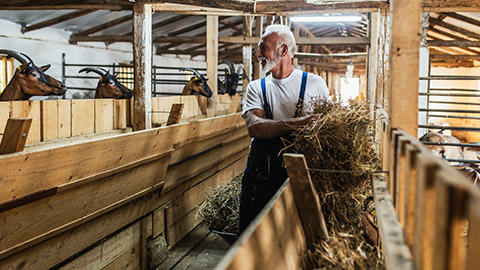
Before commencing feeding any animal, it is essential to be aware of potential hazards that may exist or occur in food distribution. Consider the following hazards to animals and humans in food distribution.
Common hazards
- Animal movement and handling
- Excessive noise
- Organic and other dust
- Possibility of zoonotic infection
- Sharps injuries (cuts and stabbing)
- Temperature when handling foods and when serving food to animals
- Amounts given (too little or too much)
- Slipping on water or food spills
- Medications (giving incorrect medication or not medicating animals when needed)
- Zoonotic diseases (not wearing the correct PPE when placing foods into cages)
- Manual handling

Hazardous animal behaviour during feeding
In the animal care industry, you must understand animal temperaments and behaviours related to the associated hazards and risks to animals and staff during animal feeding.
It’s easy to evaluate animal behaviour by remembering three categories, as identified by the Madison Shelter Medicine Program:
- Interaction with people – how is the animal responding to you, and how has it responded to people previously?
- Acclimation – how is the animal responding to their new environment?
- Approachability – do you feel comfortable approaching this animal? Will you be safe? (University of Wisconsin Madison, 2015)
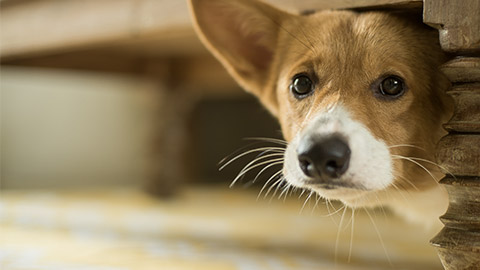
Cage cards, warning labels, and animal histories will hold information about how to handle animals. Therefore, it is essential to read these to ensure you choose the best PPE and handling techniques for individual animals when feeding.
The following table summarises some common behaviours. Observe if your animal displays any of the following characteristics of animal behaviour and alter your approach to the task at hand accordingly.
| Indictors of confidence and willingness to be approached | Indicators of stress | Submissive gestures | Defensive gestures |
|---|---|---|---|
|
|
|
|
You must understand the characteristics of the species and breeds you work with and know how to reduce the risks. For example, if you work with cats, ensure you have had training in and understand cat behaviour.
Indicators of Stress in Cats (pdf) from Daily Monitoring of Communal Cat Rooms is a good example of the type of detailed information you will need before approaching an animal.
Seek out the behavioural information relating to the animals in your care in your own workplace to keep yourself and the animal safe before, during and after feeding and watering.
You should only work with species you are trained in and refer to any organisational policies and procedures pertaining to the use of PPE and safe handling of animals.
Verbally report hazards or incidents you encounter to your workplace supervisor. If advised, use the appropriate work health and safety hazard, risk or incident form to fill in and hand to your WHS officer within the time frame as determined by your animal care workplace.
Your supervisor should take appropriate measures to ensure that this hazard or incident is dealt with and resolved efficiently and correctly.
Scenario: Bandit
Bandit is a 4 kg, 2-year-old domestic short-haired cat boarding at ABC All Animal Boarding. It is his first time boarding, and he is highly stressed, resulting in him lashing out, trying to escape, hiding and being very unpredictable in his behaviour.
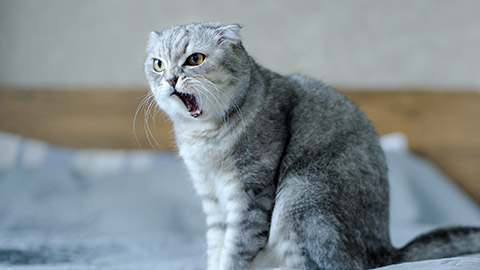
You have provided his cat crate with the door off for him to hide in, and Feliway spray is applied three times a day to his cage.
You notice that he has tipped over his water bowl. So, you will need to supply him with more water. What would be the safest way to complete this task?
Steps to Eliminate Hazards
- Assess his behaviour. However, given he is so unpredictable, he could trick you.
- Read his cage card and history to see if anyone has made notes on their successes in handling him. You could also ask other staff for updates.
- Once you are ready to approach Bandit's enclosure, ensure all doors are closed to the cat ward if he manages to escape his enclosure. If he is in his cat crate, you could insert the door so that he is confined in his crate.
- Apply PPE such as cat gloves.
- Remove the empty bowl and replace it with a fresh one so the door is open for less time.
- Remember to release him from his crate.
- Ensure you are moving calmly, quietly and with purpose at all times.
- If you have a break in looking after Bandit, ask other staff for an update on his behaviour upon return to your feeding role.
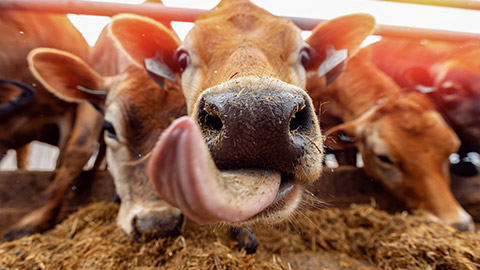
Scenario: Bella
At Happy Paws Animal Care, during the afternoon feeding time for a group of large animals (e.g., cows), a staff member, Emily, is responsible for distributing feed in a shared open pen. One of the cows, Bella, begins to display aggressive behaviour, such as pushing and shoving other cows, trying to reach the feed first. Bella starts to headbutt another cow, causing it to stumble. The commotion escalates as the other cows react to the tension. Emily is caught in the middle, trying to move out of the way, but is nearly knocked down by the animals' sudden movements.
Hazards Identified:
- Aggressive animal behaviour (pushing, headbutting, and shoving).
- Crowded feeding space leads to competition among animals.
- Human injury risk from being too close during feeding.
- Potential injury to other animals from aggressive behaviour.
Steps to Eliminate the Hazards
Assess the Environment:
- Ensure that the feeding area is large enough for all animals to access food without crowding.
- Designate separate feeding zones for aggressive or dominant animals to reduce competition.
Behavioural Management:
- Identify animals that display aggressive behaviour during feeding (like Bella) and monitor them closely. Consider separating them during feeding times.
- Feed aggressive animals last, or away from the group, to prevent competitive behaviour.
Safety Protocols for Staff:
- Staff members should always maintain a safe distance from animals during feeding. Use long-handled feeding tools or distribute feed from behind a barrier.
- Emily should always stand near an exit or escape route in an emergency. Never stand between animals when feeding.
Structured Feeding Routine:
- Introduce a structured feeding routine where food is distributed evenly in multiple locations within the pen. This will prevent animals from rushing toward a single spot.
- Feed animals in smaller, manageable groups to reduce overcrowding and aggressive competition.
Use of Barriers:
- Install physical barriers or gates that allow the staff to safely distribute food without entering the animals' immediate space.
- Implement automatic feeders or troughs that dispense food at intervals to reduce animal stress and aggression.
Animal Training:
- Implement behavioural training for animals like Bella to reduce aggressive tendencies during feeding. Positive reinforcement techniques can be used to reward calm behaviour.
Select and correctly fit appropriate personal protective equipment
Once you have prepared the food, re-read the feeding plan and take note of your animal’s behaviour. Now it’s time to consider what personal protective equipment (PPE) you need to deliver the food, feed supplements and water safely.
PPE is one of the levels of the hierarchy of control in controlling the spread of infection. Using the PPE will help minimise exposure of the veterinary and animal care staff to pathogens by decreasing the contamination of clothing and skin. It is also a barrier between you and the animals’ natural weapons, such as talons, teeth, nails, hooves and beaks. Make sure all your PPE is correctly fitted before use. Otherwise, items like gloves or boots may produce further hazards by slipping off or tripping the wearer.
Common PPE in the animal care industry

Six common examples of PPE equipment and clothing used in veterinary or animal care practices to reduce the spread of infection include:
Gowns (non-sterile)
Non-sterile gowns will provide you more protection than a lab coat or a scrub top and are mostly used in association with gloves and masks when barrier nursing and handling animals that are suspected of having an infectious disease.
Lab (over)coats
In veterinary and animal care practices, lab (over) coats should be worn when handling animals if there is no chance of splashing liquids.
Scrub suits/tops/overalls
Scrub suits, tops and overalls are more frequently used in veterinary clinics as protective wear. Their use means that everyday clothes cannot be contaminated. Overalls are commonly used when dealing with large animals or in a kennel facility.
Gloves
Gloves, whether powdered or non-powdered, will reduce the risk of contamination. It is important that these are worn whenever there is a possibility of contact with any raw foods. Leather and other types of thick gloves are commonly used as a physical barrier. Ensure you select the right size for your hands so they don’t slip off or constrain you while wearing them.
Mask and glasses
Correctly fitting masks and glasses to protect your respiratory tract and eyes. Follow the instructions to ensure they are fitted correctly and protect you sufficiently.
Footwear
Many forget that correctly sized footwear plays an important role in daily PPE. The type of footwear to use depends on the animal and the situation in which you are working. For example, if you are dealing with large animals or working in a shelter, you may wear boots, such as reinforced-toe boots or gumboots.
At a clinic or doggy daycare, wearing non-slip closed-in shoes would be sufficient. Footwear protects your feet if you stand on items and if an animal stands on your foot or you drop a sharp item.
Examples of PPE in feeding animals
The following are a few examples of animals and the minimum PPE you should wear when feeding them:
- Guinea pigs – gloves
- Cats and dogs – gloves, long pants and boots or non-slip closed-in shoes and hearing protection in a kennel situation
- Horses – fully enclosed footwear such as leather work boots or steel caps and an approved high visibility vest.
When should PPE be used?
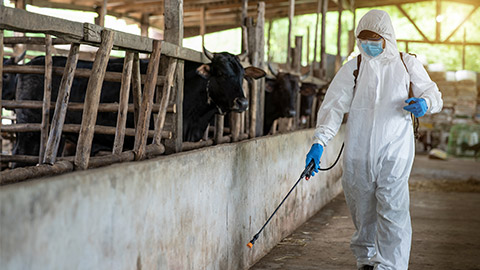
As useful as PPE is, it is one of the least effective control methods for protecting the user from risks. Therefore, PPE should only be used:
- as a last resort when the other control measures are not practical
- as an interim measure until a more effective way of controlling the risk can be used
- to supplement higher-level control measures.
Using protective equipment is vital, however, when working with animals who are known to be aggressive, especially if the animal requires restraint. Your workplace will have procedures related to the types of PPE you need to wear to stay safe at work and when to wear it. Always ensure you wear PPE correctly and ensure it is correctly fitted to provide the maximum level of safety for the task.
Review the video PPE for equine veterinarians (5:23 min), which explains how to evaluate an animal’s health in order to select the appropriate PPE.
Food and water vessels
Now, it’s time to choose how you will present the food and water to the animal you are feeding. Your animal care workplace will already have dedicated feeding vessels. Which one you select will be dependent on the species, breed, age, medical needs and activity levels of the animal. You should be aware of the pros and cons of the selection.

Considerations when selecting vessels
- Choose the material of the vessels carefully by understanding the characteristics of the species being fed. Stainless steel bowls are not only the most hygienic material as they are easily cleaned but also less likely to be damaged by animals chewing them. Ensure the vessel can’t be tipped or knocked over by the animal, in which case heavy ceramic bowls may be more suitable than stainless steel and plastic.
- Consider if the animal prefers a particular vessel.
- Consider the type of food being presented. For example, a liquid diet may require syringe delivery, whereas hay may need to be presented in a net.
- The specific medical needs of the animal will determine the type of vessel needed. For example, a raised bowl may be required for eating and swallowing conditions.
- Select an appropriately sized vessel for the animal.
- Food and water vessels are to be undamaged so as not to leak. Therefore, inspect them each day before use.
- Make sure food and water vessels are clean. Food vessels are to be dry before use when feeding an animal dry food.
- Consider how the vessel will be secured and where it will be placed. For example, will the vessel be hung on a cage or placed on the ground? Should it be placed in the shade?
- Carefully choose the location of water in relation to the food so it cannot be contaminated. For example, ensure food is not placed in a toileting area.
- Consider how many animals are being fed in one location.
- Water vessels are to be suitable for the animal and placed in such a way as to prevent leakage. For example, a guinea pig will need a drip water bottle, and some cats prefer running water, such as water fountains.
Scenario: Feeding vessels for Watermelon
Like other guinea pigs, Watermelon places her front teeth on the bowl’s rim. Therefore, a ceramic bowl is the most appropriate choice for a feeding vessel. The bowl's weight will stop it from being tipped over, and she cannot chew it (The Humane Society of the United States, n.d.).
Scenario: Feeding Bowls
At Happy Paws Animal Care, a staff member, Sophie, is responsible for feeding the small animals, including dogs and cats. Each animal has its own designated feeding bowl, which is specifically sized and made of stainless steel to ensure durability and ease of cleaning. Every morning, Sophie fills each bowl with the appropriate amount of food according to the animal’s dietary needs.
For the dogs, Sophie uses large, non-slip feeding bowls that prevent the bowls from sliding across the floor during mealtime. The bowls are designed with a slightly raised lip to help keep the food inside, reducing mess. For the cats, she uses smaller, shallower bowls that make it easier for them to access their kibble without straining.
Once feeding time is over, Sophie collects the bowls, washes them thoroughly with warm, soapy water, and ensures they are dried and stored properly for the next use. This routine keeps the feeding process organized and ensures that each animal receives its food in a clean, safe bowl, supporting their overall health and well-being.
For more information about how to choose appropriate bowls for cats and dogs, review the article, 'How to Choose the Right Bowl for Your Dog'.
Feeding methods
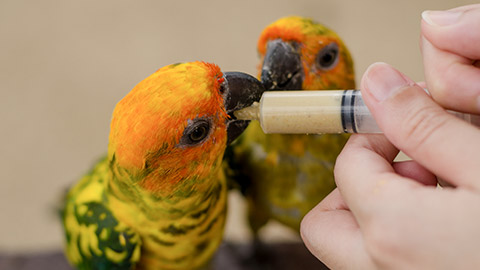
Always follow the feeding method outlined in the animal’s feeding plan. Feeding methods that are appropriate for the animal will depend on the animal's species, breed, age, and medical needs. Some common examples of feeding techniques for cats and dogs of various ages include:
- Hand feeding – to give food in fixed amounts and at a fixed time rather than allowing the animals to self-feed. Often used when an animal is picky or has inappetence to encourage feeding, such as tweezers in the case of reptiles.
- Adlib feeding, free feeding, free-access feeding, or grazing – where food is always available and the animal can choose when to feed. Care should be taken that the animal is only allowed access to its daily energy requirements to avoid overfeeding.
- Bottle feeding – feeding from a bottle, commonly used in neonates, such as when hand-rearing kittens, calves, foals and puppies.
- Controlled feeding or scheduled feeding – animals are given food at an allocated time of day, whether once, twice or more times in the day.
- Liquid diet – food is provided in a liquid form. This would be used when an animal is recovering from jaw or mouth surgery or after inappetence.
- Restricted diet or limited feeding – the animal is offered a certain amount of food as a single portion at a fixed time of the day.
Animal feeding methods
Review the following articles for more information about how to feed cats:
Review the following articles about different feeding methods for other species:
- Recommended Feeding Methods of Companion Birds
- Hand-feeding Methods & Tools
- Winging It: A Parenting Test for Guam Kingfishers
- Oryx Calf Update: Bottle Feeding Q&A.
- Ferret Food & Water Bowls: How To Pick The Best Ones?
- Equine Feeding Management: The How & When of Feeding Horses
Knowledge Check 5
Complete the following two (2) tasks. Click the arrows to navigate between the tasks.
Check and maintain food and water supply
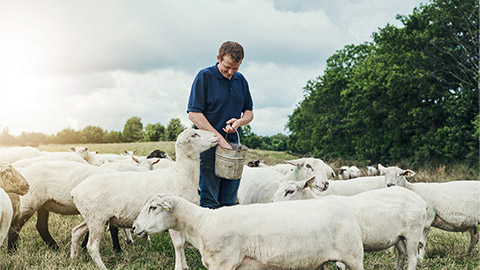
When giving food to your animal, make sure that it is out of direct sunlight and away from contaminants such as dirt, soil and rubbish.
Position food and water vessels to avoid any spillage or contamination by urine or faeces. Ensure that vessels are always clean and free from contaminants. You will need to move them to a more appropriate area if they are not. Animals often overturn food and water bowls. Make sure the bowls are secured to stop this from happening.
Food and water must be checked regularly to ensure they remain fresh and clean by replenishing when needed. During the summer months, food and water are to be checked and changed more frequently. Food spoilage will be more rapid, and water will warm quickly. Ice blocks can be added to the water when experiencing high temperatures. Always ensure there is plenty of clean, fresh water available to avoid an animal getting dehydrated (except those undergoing treatments that require no water intake).
All uneaten food should be removed promptly to avoid any spoilage, attraction of vermin and food poisoning.
Once you have checked an animal’s food and water supply, you must record this on the animal’s record sheet, including any replenishment.
Monitor the feeding process to ensure animals are feeding effectively
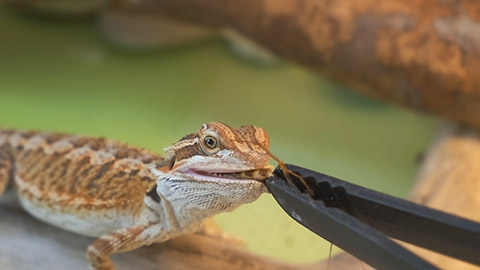
When food is placed into the animal’s cage, it will be recorded on the animal’s record monitoring chart with the date, time, type of food, amount given, and details. This will ensure that the animal is not over or underfed or watered. This food and water monitoring is performed manually by the person who fed the animal.
There are eight (8) common things that you may need to observe and record about how a particular animal eats and drinks:
Review the following examples of daily monitoring sheets from Shelter Medicine, School of Veterinary Medicine at the University of Wisconsin-Madison to understand the details required in monitoring animals in the workplace:
All animals should have their weight recorded upon arrival at a facility. Animals should then be weighed at the same time daily to ensure that the appropriate weight is maintained according to the animal’s problem (for example, losing weight in an obese animal, gaining weight in a puppy or kitten and maintaining weight in a healthy or sick animal). This will also determine how effective the food that they are given is.
Positives of Monitoring the Feeding Process
- Early Detection of Health Issues: Changes in appetite or eating behaviour can be one of the first signs of health problems. Monitoring feeding allows early intervention, improving the chance of successful treatment.
- Ensuring Proper Nutrition: Careful observation ensures that animals are receiving the right amount and type of food, supporting their overall health, energy levels, and well-being.
- Improving Animal Welfare: Monitoring feeding helps reduce stress in group settings by ensuring all animals have equal access to food, leading to a more peaceful environment.
- Record-Keeping for Accountability: Keeping detailed feeding records provides a clear history of each animal’s intake and can be referenced by veterinarians or staff to tailor care plans.
Why Monitoring is Important
- Prevents Overeating or Undernourishment: Regular monitoring helps prevent issues like obesity or malnutrition, which can lead to long-term health complications.
- Detects Behavioural Issues: Some animals may hoard food or exhibit dominance during feeding times. Monitoring ensures that these behaviours are addressed before they escalate.
- Ensures Consistency: Consistent monitoring ensures that animals’ diets are adjusted as needed for changes in age, activity levels, or health conditions.
- Supports Recovery in Sick Animals: For animals recovering from illness or surgery, monitoring their food intake is crucial to ensure they’re getting enough nutrition to heal properly.
Knowledge Check 6
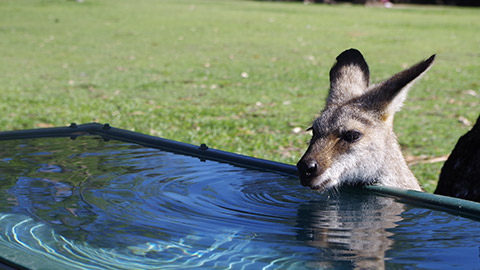
Observe variations in individual eating and drinking patterns and inform the supervisor
It is not uncommon for animals staying within new environments to become fussy or refrain from eating and drinking. Learning tips and tricks to make food more appealing to animals is essential. Some animals will feel overwhelmed if offered too much food, so offering smaller meals more often can be a great way to tempt them to eat. Cats are nocturnal by nature, and it is not uncommon for stressed cats to only eat at night. 13 Tips for How to Get a Cat to Eat EVERY Time is a fantastic article on how to encourage cats to eat. The techniques discussed can be used for a variety of species.
Recording all information on the animal’s record sheet, especially any unusual behaviour or eating patterns, is essential. Make a general observation of sick animals, taking note of weight loss, diarrhoea and ill thrift. Observations may also reveal the animal has been vomiting, regurgitating, or has constipation. It is extremely important to verbally report any unusual behaviours to your supervisor as soon as you notice them to prevent further decline. An animal may need to be referred to a veterinarian for further examination.
Eating and drinking abnormalities may include:
- gorging
- increased water intake
- reluctance to eat
- reluctance to eat previously accepted foodstuffs.
Your observations may reveal that some animals prefer or need to have wet or canned food over dry food. This needs to be noted down on the animal’s record chart so the appropriate type of food is given.
Remember, also, that some animals are frightened and may only eat when it is quiet and no one is around (for example, overnight).
Recording this information should be done manually on the animal’s record sheet located in the animal’s folder in their cage. Any variations to the animal’s eating and drinking patterns, including abnormal behaviours or physical abnormalities, should be recorded and immediately reported verbally to the supervisor and then, if applicable, to the animal’s veterinarian (Hollinger H., 2022).
Scenario: Observing Watermelon’s feeding habits
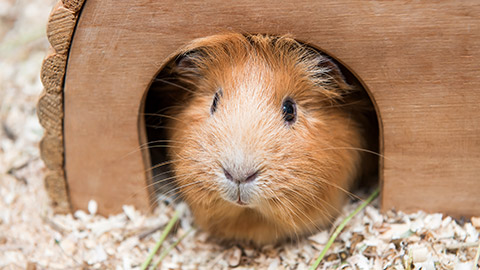
One afternoon, you notice that Watermelon had not eaten any of her previous meals, there is evidence of diarrhoea in her cage, and she is not her usual active self.
You should record this information on her cage card and report it to your supervisor. The following cage card is an example of how you could record this information.
| ABC All Animal Boarding | ||||||
|---|---|---|---|---|---|---|
| Animal name: Watermelon
|
Owner name: Truss Owner number: 0400 800 800 |
Species: Cavy (guinea pig) Breed: Satin Age: 1 year Colour: Golden |
Sex: Female Desexed: No Weight: 470 g |
|||
| Stay | Feeding | Services | ||||
|
Date in: 18/07/2022 Date out: 01/08/2022 |
Product: Fresh vegetables (named container in the fridge) Amount: 1/2 cup per meal Frequency/timing: Morning and evening |
Hydrobath - flea/tick: No Hydrobath - medicated: No Hand bath: No |
Clip (details): No Nail clip: Yes |
|||
| Vaccinations | Preventative health | Medication / supplements | ||||
|
Due date: n/a Type: |
Product: Due date: |
Product: Vitamin C powder Dose: 1/2 scoop daily Timing: Evening, on food |
||||
| Notes: | ||||||
| Date | Eat | Drink | Urine | Faeces | Medication | Notes: |
| 18/07/2022 am | ✔ all | ✔ | ✔ | ✔ | ||
| 18/07/2022 pm | ✔ half | ✔ | ✔ | ✔ | Vitamin C powder | |
| 19/07/2022 am | ✘ none | ✔ | ✔ | ✔ Runny | Lethargic | |
Knowledge Check 7
Complete the following three (3) tasks. Click the arrows to navigate between the tasks.
Before we delve into some practical activities that will assist you in preparing for your assessment, let's go over some crucial things to remember.
When we are looking at food for animals, there are a few considerations you need to take into account when looking at what is best. See the following images.
|
Setting: Food Choice: Scene: Max sits patiently but excited, eyes wide, staring intently at the bowl as you scoop the food into it. His tail wags furiously, but he knows to wait until you give the signal. He can smell the chicken and rice, and his body language shows anticipation—ears perked up, and his nose twitching. Once the bowl is on the floor, you give him the cue to eat, and Max eagerly approaches. He starts eating, clearly enjoying the taste, but at a pace that allows him to properly chew the kibble. You observe him closely to make sure he doesn't eat too quickly, as it can cause digestion issues. As Max finishes his meal, he looks back up at you, content but still hopeful for more. You stick to the feeding plan, ensuring that his portions meet the nutritional requirements for his growing body and avoiding overfeeding. Conclusion: |
|
Setting: Food Choice: Scene: Bella watches eagerly as you prepare her meal, her little nose sniffing the air. Her eyes are focused on the bowl, and her tail wags in excitement, even though she struggles with harder kibble sometimes. To make it easier for Bella to eat, you decide to soak the kibble in a bit of warm water for a few minutes. As the kibble softens, Bella sits attentively, her eyes wide with anticipation. Once it’s ready, the kibble has absorbed the water and is now soft enough for Bella to chew without discomfort. You place the bowl on the floor, and Bella approaches cautiously at first, sniffing the softened kibble. Once she realises it's easier to eat, she starts munching happily, her missing teeth no longer causing her any trouble. Her body language is relaxed, and she enjoys the meal at her own pace. Conclusion: |
Grams VS Cups
When it comes to feeding dogs, accurately measuring their food is essential for maintaining their health and preventing over- or underfeeding. Dog food can be measured either by cups or by grams, and understanding the difference between these two methods can help ensure your dog gets the right portion.
Accuracy and Precision
- Grams: Measuring dog food by grams is the most accurate way to portion out food. Since dog food kibbles vary in size and density, using a scale to measure grams ensures you give the exact amount specified by feeding guidelines. This is especially important for dogs with specific dietary needs or weight management concerns.
- Cups: Measuring by cups is a more convenient but less precise method. A "cup" can vary depending on how densely the kibble is packed or if the scoop is heaped or levelled. Even slight variations in how you measure can result in feeding too much or too little.
Variability in Cup Measurements
- Different brands and types of kibble have different weights. For example, 1 cup of a lightweight kibble might weigh 100 grams, while 1 cup of a denser kibble could weigh 120 grams or more. This is why it’s important to check the feeding instructions on the food package, as it will often provide both grams and cups for guidance.
- For example, if the feeding guide says, “feed 120 grams or 1 cup,” but your kibble is denser than the average, 1 cup might actually weigh more than 120 grams, leading to overfeeding.
1. Dog Food Example
Conclusion: Weighing the food ensures your dog gets exactly 200 grams, while using cups could result in over- or underfeeding, especially if your measurement isn’t precise. |
2. Cat Food Example
Conclusion: Measuring by grams ensures you follow the feeding plan exactly, while using a cup would result in a small but significant overfeeding. |
3. Horse Food Example
Conclusion: Using a scale to measure kilograms ensures accurate portions, while relying on cups or scoops introduces variability that could lead to unintended overfeeding or underfeeding. |
Summary of Key Points:
In all cases, weighing food in grams or kilograms is the most accurate method for ensuring animals receive the proper portion size according to their dietary needs, whereas using cups or scoops may be convenient but introduces the risk of over- or underfeeding. |
Task 1:
Today, you are working in the cattery at Happy Paws, where I’m responsible for feeding, cleaning, and providing enrichment for the five cats currently in residence. Each cat has its own unique personality and needs, which requires attention to detail and patience.
| Milo (Grey Tabby) Milo is a 4-year-old grey tabby with striking black stripes. He’s a quiet, observant cat who prefers to keep to himself. He loves lounging on the top perch of the cat tree, where he can watch the room but stay out of the way of the more energetic cats. Milo is a picky eater and prefers wet food over dry kibble, and it’s essential to monitor his water intake as he tends to drink less than the others. |
| Bella (Siamese) Bella is a 2-year-old Siamese with pale cream fur and chocolate-coloured points. She’s very vocal and demands attention from anyone who walks by. Bella loves playing with feather toys and often paws at the door to the cattery for more social interaction. She’s a bit of a diva and doesn’t like sharing her space with the other cats, so I need to ensure she has her own feeding area and some alone time to relax. |
| Max (Maine Coon) Max is a 5-year-old Maine Coon with a luxurious, long, orange coat. He’s the gentle giant of the group, always calm and friendly. Max loves being groomed, and since his fur can easily become matted, daily brushing is part of his routine. He’s also very food-motivated and will eat anything you give him, so I have to ensure he doesn’t try to sneak food from the others’ bowls. |
| Luna (Black Domestic Shorthair) Luna is a sleek 3-year-old black domestic shorthair. She’s playful but can be shy around new people. Luna is most active in the early mornings and late evenings, often darting around after a toy mouse or batting at the scratching posts. She’s quite independent and enjoys her time up high on the shelves. Luna is also prone to hairballs, so I include a small portion of digestive support treats in her diet. |
| Oscar (Tortoiseshell) Oscar is a 6-year-old male tortoiseshell, which is rare for his breed. He’s extremely affectionate and always ready for a cuddle, purring as soon as you start petting him. Oscar is the most social of the group and seems to get along well with the other cats. He has a habit of curling up in the softest bedding he can find, and I often catch him in the sunniest spot by the window, soaking in the warmth. |
You are working in the cattery at Happy Paws, where you need to prepare and divide the daily meals for the five cats. Each cat has a specific dietary requirement, and you are tasked with ensuring they receive the correct portion sizes based on their weight and preferences.
|
The cats’ meal requirements are as follows:
|
Task:
- Calculate the total amount of food each cat needs for the day (in grams).
- Determine how much of that total is wet food and how much is dry food for the cats who receive both.
- Show your work for each calculation, and round to the nearest gram where applicable.
For example, to calculate Milo’s daily food intake:
Milo weighs 4 kg and needs 4% of his body weight in food each day.
4% of 4 kg = (4 / 100) × 4000 g = 160 g of wet food daily
__________________________________________________________________________________________
Task 2:
You are responsible for selecting the best food for the five cats in the cattery at Happy Paws. Each cat has unique dietary needs, so it’s important to carefully assess the nutritional content of the food options available. Below, you have three different brands of cat food (Brand A, Brand B, and Brand C), each with varying nutritional profiles.
| Cat Profiles |
|---|
|
Task:
- Based on the nutritional information provided, select the most suitable food (Brand A, Brand B, or Brand C) for each cat. Explain your reasoning for each choice, taking into account their dietary needs.
Assessment Criteria:
- Accurate identification of the best-suited brand for each cat.
- Justification for your selection based on the cat’s health and nutritional requirements.
- Understanding of how protein, fat, fibre, moisture, and ash affect a cat’s health.
|
Royal Canin (Wet Food)
|
|
Hill’s Science Diet (Dry Food)
|
|
Purina Pro Plan (Wet Food)
|
|
Whiskas (Dry Food)
|
|
Blue Buffalo (Wet Food)
|
In this section of the module are answers to the Knowledge Check to assist you in your studies.
Milo (4 kg)
|
Bella (3.5 kg)
|
Max (6.5 kg)
|
Luna (4.2 kg)
|
Oscar (5 kg)
|
Summary of Daily Food Requirements:
This gives a clear example of how to calculate the meal plan for each cat, ensuring their individual dietary needs are met. |
Task 2
1. Milo (4 kg)
|
2. Bella (3.5 kg)
|
3. Max (6.5 kg)
|
4. Luna (4.2 kg)
|
5. Oscar (5 kg)
|
